6ES7516-3UN00-0AB0 Siemens S7-1500 Ethernet Module
$9,800.00
- Onderdeelnummer: 6ES7516-3UN00-0AB0
- Fabrikant:Siemens
- Beschikbaarheid: In Stock
- Geschatte levertijd: Wordt doorgaans binnen 1-5 werkdagen verzonden
- Staat: Gloednieuw
- Garantie :12 maanden
| General information | |||||||||||||||||||||||||||||||||||||||||
| Product type designation | CPU 1516TF-3 PN/DP | ||||||||||||||||||||||||||||||||||||||||
| HW functional status | FS11 | ||||||||||||||||||||||||||||||||||||||||
| Firmware version | V3.1 | ||||||||||||||||||||||||||||||||||||||||
| ● FW update possible | Ja | ||||||||||||||||||||||||||||||||||||||||
| Product function | |||||||||||||||||||||||||||||||||||||||||
| ● I&M data | Yes; I&M0 to I&M3 | ||||||||||||||||||||||||||||||||||||||||
| ● Isochronous mode | Yes; Distributed and central; with minimum OB 6x cycle of 375 µs (distributed) and 1 ms (central) | ||||||||||||||||||||||||||||||||||||||||
| ● SysLog | Ja | ||||||||||||||||||||||||||||||||||||||||
| Engineering with | |||||||||||||||||||||||||||||||||||||||||
| ● STEP 7 TIA Portal configurable/integrated from version | V19 (FW V3.1) / V15 (FW V2.5) or higher | ||||||||||||||||||||||||||||||||||||||||
| Configuration control | |||||||||||||||||||||||||||||||||||||||||
| via dataset | Ja | ||||||||||||||||||||||||||||||||||||||||
| Display | |||||||||||||||||||||||||||||||||||||||||
| Screen diagonal [cm] | 6.1 cm | ||||||||||||||||||||||||||||||||||||||||
| Control elements | |||||||||||||||||||||||||||||||||||||||||
| Number of keys | 6 | ||||||||||||||||||||||||||||||||||||||||
| Mode selector switch | 1 | ||||||||||||||||||||||||||||||||||||||||
| Supply voltage | |||||||||||||||||||||||||||||||||||||||||
| Rated value (DC) | 24 V | ||||||||||||||||||||||||||||||||||||||||
| permissible range, lower limit (DC) | 19.2 V | ||||||||||||||||||||||||||||||||||||||||
| permissible range, upper limit (DC) | 28.8 V | ||||||||||||||||||||||||||||||||||||||||
| Reverse polarity protection | Ja | ||||||||||||||||||||||||||||||||||||||||
| Mains buffering | |||||||||||||||||||||||||||||||||||||||||
| ● Mains/voltage failure stored energy time | 5 ms | ||||||||||||||||||||||||||||||||||||||||
| ● Repeat rate, min. | 1/s | ||||||||||||||||||||||||||||||||||||||||
| Input current | |||||||||||||||||||||||||||||||||||||||||
| Current consumption (rated value) | 1.2 A | ||||||||||||||||||||||||||||||||||||||||
| Current consumption, max. | 1.5 A | ||||||||||||||||||||||||||||||||||||||||
| Inrush current, max. | 1.9 A; Rated value | ||||||||||||||||||||||||||||||||||||||||
| I²t | 0.4 A²·s | ||||||||||||||||||||||||||||||||||||||||
| Power | |||||||||||||||||||||||||||||||||||||||||
| Infeed power to the backplane bus | 12 W | ||||||||||||||||||||||||||||||||||||||||
| Power consumption from the backplane bus (balanced) | 30 W | ||||||||||||||||||||||||||||||||||||||||
| Power loss | |||||||||||||||||||||||||||||||||||||||||
| Power loss, typ. | 24 W | ||||||||||||||||||||||||||||||||||||||||
| Memory | |||||||||||||||||||||||||||||||||||||||||
| Number of slots for SIMATIC memory card | 1 | ||||||||||||||||||||||||||||||||||||||||
| SIMATIC memory card required | Ja | ||||||||||||||||||||||||||||||||||||||||
| Work memory | |||||||||||||||||||||||||||||||||||||||||
| ● integrated (for program) | 3 Mbyte | ||||||||||||||||||||||||||||||||||||||||
| ● integrated (for data) | 7.5 Mbyte | ||||||||||||||||||||||||||||||||||||||||
| Load memory | |||||||||||||||||||||||||||||||||||||||||
| ● Plug-in (SIMATIC Memory Card), max. | 32 Gbyte | ||||||||||||||||||||||||||||||||||||||||
| Backup | |||||||||||||||||||||||||||||||||||||||||
| ● maintenance-free | Ja | ||||||||||||||||||||||||||||||||||||||||
| CPU processing times | |||||||||||||||||||||||||||||||||||||||||
| for bit operations, typ. | 6 ns | ||||||||||||||||||||||||||||||||||||||||
| for word operations, typ. | 7 ns | ||||||||||||||||||||||||||||||||||||||||
| for fixed point arithmetic, typ. | 9 ns | ||||||||||||||||||||||||||||||||||||||||
| for floating point arithmetic, typ. | 37 ns | ||||||||||||||||||||||||||||||||||||||||
| CPU-blocks | |||||||||||||||||||||||||||||||||||||||||
| Number of elements (total) | 8 000; Blocks (OB, FB, FC, DB) and UDTs | ||||||||||||||||||||||||||||||||||||||||
| DB | |||||||||||||||||||||||||||||||||||||||||
| ● Number range | 1 … 60 999; subdivided into: number range that can be used by the user: 1 … 59 999, and number range of DBs created via SFC 86: 60 000 … 60 999 | ||||||||||||||||||||||||||||||||||||||||
| ● Size, max. | 7.5 Mbyte; For DBs with absolute addressing, the max. size is 64 KB | ||||||||||||||||||||||||||||||||||||||||
| FB | |||||||||||||||||||||||||||||||||||||||||
| ● Number range | 0 … 65 535 | ||||||||||||||||||||||||||||||||||||||||
| ● Size, max. | 1 Mbyte | ||||||||||||||||||||||||||||||||||||||||
| FC | |||||||||||||||||||||||||||||||||||||||||
| ● Number range | 0 … 65 535 | ||||||||||||||||||||||||||||||||||||||||
| ● Size, max. | 1 Mbyte | ||||||||||||||||||||||||||||||||||||||||
| OB | |||||||||||||||||||||||||||||||||||||||||
| ● Size, max. | 1 Mbyte | ||||||||||||||||||||||||||||||||||||||||
| ● Number of free cycle OBs | 100 | ||||||||||||||||||||||||||||||||||||||||
| ● Number of time alarm OBs | 20 | ||||||||||||||||||||||||||||||||||||||||
| ● Number of delay alarm OBs | 20 | ||||||||||||||||||||||||||||||||||||||||
| ● Number of cyclic interrupt OBs | 20; With minimum OB 3x cycle of 250 µs | ||||||||||||||||||||||||||||||||||||||||
| ● Number of process alarm OBs | 50 | ||||||||||||||||||||||||||||||||||||||||
| ● Number of DPV1 alarm OBs | 3 | ||||||||||||||||||||||||||||||||||||||||
| ● Number of isochronous mode OBs | 3 | ||||||||||||||||||||||||||||||||||||||||
| ● Number of technology synchronous alarm OBs | 2 | ||||||||||||||||||||||||||||||||||||||||
| ● Number of startup OBs | 100 | ||||||||||||||||||||||||||||||||||||||||
| ● Number of asynchronous error OBs | 4 | ||||||||||||||||||||||||||||||||||||||||
| ● Number of synchronous error OBs | 2 | ||||||||||||||||||||||||||||||||||||||||
| ● Number of diagnostic alarm OBs | 1 | ||||||||||||||||||||||||||||||||||||||||
| Nesting depth | |||||||||||||||||||||||||||||||||||||||||
| ● per priority class | 24; Up to 8 possible for F-blocks | ||||||||||||||||||||||||||||||||||||||||
| Counters, timers and their retentivity | |||||||||||||||||||||||||||||||||||||||||
| S7 counter | |||||||||||||||||||||||||||||||||||||||||
| ● Number | 2 048 | ||||||||||||||||||||||||||||||||||||||||
| Retentivity | |||||||||||||||||||||||||||||||||||||||||
| — adjustable | Ja | ||||||||||||||||||||||||||||||||||||||||
| IEC counter | |||||||||||||||||||||||||||||||||||||||||
| ● Number | Any (only limited by the main memory) | ||||||||||||||||||||||||||||||||||||||||
| Retentivity | |||||||||||||||||||||||||||||||||||||||||
| — adjustable | Ja | ||||||||||||||||||||||||||||||||||||||||
| S7 times | |||||||||||||||||||||||||||||||||||||||||
| ● Number | 2 048 | ||||||||||||||||||||||||||||||||||||||||
| Retentivity | |||||||||||||||||||||||||||||||||||||||||
| — adjustable | Ja | ||||||||||||||||||||||||||||||||||||||||
| IEC timer | |||||||||||||||||||||||||||||||||||||||||
| ● Number | Any (only limited by the main memory) | ||||||||||||||||||||||||||||||||||||||||
| Retentivity | |||||||||||||||||||||||||||||||||||||||||
| — adjustable | Ja | ||||||||||||||||||||||||||||||||||||||||
| Data areas and their retentivity | |||||||||||||||||||||||||||||||||||||||||
| Retentive data area (incl. timers, counters, flags), max. | 512 kbyte; In total; available retentive memory for bit memories, timers, counters, DBs, and technology data (axes): 472 KB | ||||||||||||||||||||||||||||||||||||||||
| Extended retentive data area (incl. timers, counters, flags), max. | 7.5 Mbyte; When using PS 6 0W 24/48/60 V DC HF | ||||||||||||||||||||||||||||||||||||||||
| Flag | |||||||||||||||||||||||||||||||||||||||||
| ● Size, max. | 16 kbyte | ||||||||||||||||||||||||||||||||||||||||
| ● Number of clock memories | 8; 8 clock memory bit, grouped into one clock memory byte | ||||||||||||||||||||||||||||||||||||||||
| Data blocks | |||||||||||||||||||||||||||||||||||||||||
| ● Retentivity adjustable | Ja | ||||||||||||||||||||||||||||||||||||||||
| ● Retentivity preset | No | ||||||||||||||||||||||||||||||||||||||||
| Local data | |||||||||||||||||||||||||||||||||||||||||
| ● per priority class, max. | 64 kbyte; max. 16 KB per block | ||||||||||||||||||||||||||||||||||||||||
| Address area | |||||||||||||||||||||||||||||||||||||||||
| Number of IO modules | 8 192; max. number of modules / submodules | ||||||||||||||||||||||||||||||||||||||||
| I/O address area | |||||||||||||||||||||||||||||||||||||||||
| ● Inputs | 32 kbyte; All inputs are in the process image | ||||||||||||||||||||||||||||||||||||||||
| ● Outputs | 32 kbyte; All outputs are in the process image | ||||||||||||||||||||||||||||||||||||||||
| per integrated IO subsystem | |||||||||||||||||||||||||||||||||||||||||
| — Inputs (volume) | 8 kbyte | ||||||||||||||||||||||||||||||||||||||||
| — Outputs (volume) | 8 kbyte | ||||||||||||||||||||||||||||||||||||||||
| per CM/CP | |||||||||||||||||||||||||||||||||||||||||
| — Inputs (volume) | 8 kbyte | ||||||||||||||||||||||||||||||||||||||||
| — Outputs (volume) | 8 kbyte | ||||||||||||||||||||||||||||||||||||||||
| Subprocess images | |||||||||||||||||||||||||||||||||||||||||
| ● Number of subprocess images, max. | 32 | ||||||||||||||||||||||||||||||||||||||||
| Hardware configuration | |||||||||||||||||||||||||||||||||||||||||
| Number of distributed IO systems | 64; A distributed I/O system is characterized not only by the integration of distributed I/O via PROFINET or PROFIBUS communication modules, but also by the connection of I/O via AS-i master modules or links (e.g. IE/PB-Link) | ||||||||||||||||||||||||||||||||||||||||
| Number of DP masters | |||||||||||||||||||||||||||||||||||||||||
| ● integrated | 1 | ||||||||||||||||||||||||||||||||||||||||
| ● Via CM | 8; A maximum of 8 CMs/CPs (PROFIBUS, PROFINET, Ethernet) can be inserted in total | ||||||||||||||||||||||||||||||||||||||||
| Number of IO Controllers | |||||||||||||||||||||||||||||||||||||||||
| ● integrated | 2 | ||||||||||||||||||||||||||||||||||||||||
| ● Via CM | 8; A maximum of 8 CMs/CPs (PROFIBUS, PROFINET, Ethernet) can be inserted in total | ||||||||||||||||||||||||||||||||||||||||
| Rack | |||||||||||||||||||||||||||||||||||||||||
| ● Modules per rack, max. | 32; CPU + 31 modules | ||||||||||||||||||||||||||||||||||||||||
| ● Number of lines, max. | 1 | ||||||||||||||||||||||||||||||||||||||||
| PtP CM | |||||||||||||||||||||||||||||||||||||||||
| ● Number of PtP CMs | the number of connectable PtP CMs is only limited by the number of available slots | ||||||||||||||||||||||||||||||||||||||||
| Time of day | |||||||||||||||||||||||||||||||||||||||||
| Clock | |||||||||||||||||||||||||||||||||||||||||
| ● Type | Hardware clock | ||||||||||||||||||||||||||||||||||||||||
| ● Backup time | 6 wk; At 40 °C ambient temperature, typically | ||||||||||||||||||||||||||||||||||||||||
| ● Deviation per day, max. | 10 s; Typ.: 2 s | ||||||||||||||||||||||||||||||||||||||||
| Operating hours counter | |||||||||||||||||||||||||||||||||||||||||
| ● Number | 16 | ||||||||||||||||||||||||||||||||||||||||
| Clock synchronization | |||||||||||||||||||||||||||||||||||||||||
| ● supported | Ja | ||||||||||||||||||||||||||||||||||||||||
| ● to DP, master | Ja | ||||||||||||||||||||||||||||||||||||||||
| ● on DP, device | Ja | ||||||||||||||||||||||||||||||||||||||||
| ● in AS, master | Ja | ||||||||||||||||||||||||||||||||||||||||
| ● in AS, device | Ja | ||||||||||||||||||||||||||||||||||||||||
| ● on Ethernet via NTP | Ja | ||||||||||||||||||||||||||||||||||||||||
| Interfaces | |||||||||||||||||||||||||||||||||||||||||
| Number of PROFINET interfaces | 2 | ||||||||||||||||||||||||||||||||||||||||
| Number of PROFIBUS interfaces | 1 | ||||||||||||||||||||||||||||||||||||||||
| 1. Interface | |||||||||||||||||||||||||||||||||||||||||
| Interface types | |||||||||||||||||||||||||||||||||||||||||
| ● RJ 45 (Ethernet) | Yes; X1 | ||||||||||||||||||||||||||||||||||||||||
| ● Number of ports | 2 | ||||||||||||||||||||||||||||||||||||||||
| ● integrated switch | Ja | ||||||||||||||||||||||||||||||||||||||||
| Protocols | |||||||||||||||||||||||||||||||||||||||||
| ● IP protocol | Yes; IPv4 | ||||||||||||||||||||||||||||||||||||||||
| ● PROFINET IO Controller | Ja | ||||||||||||||||||||||||||||||||||||||||
| ● PROFINET IO Device | Ja | ||||||||||||||||||||||||||||||||||||||||
| ● SIMATIC communication | Ja | ||||||||||||||||||||||||||||||||||||||||
| ● Open IE communication | Yes; Optionally also encrypted | ||||||||||||||||||||||||||||||||||||||||
| ● Web server | Ja | ||||||||||||||||||||||||||||||||||||||||
| ● Media redundancy | Ja | ||||||||||||||||||||||||||||||||||||||||
| PROFINET IO Controller | |||||||||||||||||||||||||||||||||||||||||
| Services | |||||||||||||||||||||||||||||||||||||||||
| — Isochronous mode | Ja | ||||||||||||||||||||||||||||||||||||||||
| — Direct data exchange | Yes; Requirement: IRT and isochronous mode (MRPD optional) | ||||||||||||||||||||||||||||||||||||||||
| — IRT | Ja | ||||||||||||||||||||||||||||||||||||||||
| — PROFIenergy | Yes; per user program | ||||||||||||||||||||||||||||||||||||||||
| — Prioritized startup | Yes; Max. 32 PROFINET devices | ||||||||||||||||||||||||||||||||||||||||
| — Number of connectable IO Devices, max. | 256; In total, up to 1 000 distributed I/O devices can be connected via AS-i, PROFIBUS or PROFINET | ||||||||||||||||||||||||||||||||||||||||
| — Of which IO devices with IRT, max. | 64 | ||||||||||||||||||||||||||||||||||||||||
| — Number of connectable IO Devices for RT, max. | 256 | ||||||||||||||||||||||||||||||||||||||||
| — of which in line, max. | 256 | ||||||||||||||||||||||||||||||||||||||||
| — Number of IO Devices that can be simultaneously activated/deactivated, max. | 8; in total across all interfaces | ||||||||||||||||||||||||||||||||||||||||
| — Number of IO Devices per tool, max. | 8 | ||||||||||||||||||||||||||||||||||||||||
| — Updating times | The minimum value of the update time also depends on communication share set for PROFINET IO, on the number of IO devices, and on the quantity of configured user data | ||||||||||||||||||||||||||||||||||||||||
| — PROFINET Security Class | 1 | ||||||||||||||||||||||||||||||||||||||||
| Update time for IRT | |||||||||||||||||||||||||||||||||||||||||
| — for send cycle of 250 µs | 250 μs to 4 ms; Note: In the case of IRT with isochronous mode, the minimum update time of 375 µs of the isochronous OB is decisive | ||||||||||||||||||||||||||||||||||||||||
| — for send cycle of 500 µs | 500 µs to 8 ms | ||||||||||||||||||||||||||||||||||||||||
| — for send cycle of 1 ms | 1 ms to 16 ms | ||||||||||||||||||||||||||||||||||||||||
| — for send cycle of 2 ms | 2 ms to 32 ms | ||||||||||||||||||||||||||||||||||||||||
| — for send cycle of 4 ms | 4 ms to 64 ms | ||||||||||||||||||||||||||||||||||||||||
| — With IRT and parameterization of “odd” send cycles | Update time = set “odd” send clock (any multiple of 125 µs: 375 µs, 625 µs … 3 875 µs) | ||||||||||||||||||||||||||||||||||||||||
| Update time for RT | |||||||||||||||||||||||||||||||||||||||||
| — for send cycle of 250 µs | 250 µs to 128 ms | ||||||||||||||||||||||||||||||||||||||||
| — for send cycle of 500 µs | 500 µs to 256 ms | ||||||||||||||||||||||||||||||||||||||||
| — for send cycle of 1 ms | 1 ms to 512 ms | ||||||||||||||||||||||||||||||||||||||||
| — for send cycle of 2 ms | 2 ms to 512 ms | ||||||||||||||||||||||||||||||||||||||||
| — for send cycle of 4 ms | 4 ms to 512 ms | ||||||||||||||||||||||||||||||||||||||||
| PROFINET IO Device | |||||||||||||||||||||||||||||||||||||||||
| Services | |||||||||||||||||||||||||||||||||||||||||
| — Isochronous mode | No | ||||||||||||||||||||||||||||||||||||||||
| — IRT | Ja | ||||||||||||||||||||||||||||||||||||||||
| — PROFIenergy | Yes; per user program | ||||||||||||||||||||||||||||||||||||||||
| — Shared device | Ja | ||||||||||||||||||||||||||||||||||||||||
| — Number of IO Controllers with shared device, max. | 4 | ||||||||||||||||||||||||||||||||||||||||
| — activation/deactivation of I-devices | Yes; per user program | ||||||||||||||||||||||||||||||||||||||||
| — Asset management record | Yes; per user program | ||||||||||||||||||||||||||||||||||||||||
| — PROFINET Security Class | SNMP Configuration and DCP Read Only | ||||||||||||||||||||||||||||||||||||||||
| 2. Interface | |||||||||||||||||||||||||||||||||||||||||
| Interface types | |||||||||||||||||||||||||||||||||||||||||
| ● RJ 45 (Ethernet) | Yes; X2 | ||||||||||||||||||||||||||||||||||||||||
| ● Number of ports | 1 | ||||||||||||||||||||||||||||||||||||||||
| ● integrated switch | No | ||||||||||||||||||||||||||||||||||||||||
| Protocols | |||||||||||||||||||||||||||||||||||||||||
| ● IP protocol | Yes; IPv4 | ||||||||||||||||||||||||||||||||||||||||
| ● PROFINET IO Controller | Ja | ||||||||||||||||||||||||||||||||||||||||
| ● PROFINET IO Device | Ja | ||||||||||||||||||||||||||||||||||||||||
| ● SIMATIC communication | Ja | ||||||||||||||||||||||||||||||||||||||||
| ● Open IE communication | Yes; Optionally also encrypted | ||||||||||||||||||||||||||||||||||||||||
| ● Web server | Ja | ||||||||||||||||||||||||||||||||||||||||
| ● Media redundancy | No | ||||||||||||||||||||||||||||||||||||||||
| PROFINET IO Controller | |||||||||||||||||||||||||||||||||||||||||
| Services | |||||||||||||||||||||||||||||||||||||||||
| — Isochronous mode | No | ||||||||||||||||||||||||||||||||||||||||
| — Direct data exchange | No | ||||||||||||||||||||||||||||||||||||||||
| — IRT | No | ||||||||||||||||||||||||||||||||||||||||
| — PROFIenergy | Yes; per user program | ||||||||||||||||||||||||||||||||||||||||
| — Prioritized startup | No | ||||||||||||||||||||||||||||||||||||||||
| — Number of connectable IO Devices, max. | 32; In total, up to 1 000 distributed I/O devices can be connected via AS-i, PROFIBUS or PROFINET | ||||||||||||||||||||||||||||||||||||||||
| — Number of connectable IO Devices for RT, max. | 32 | ||||||||||||||||||||||||||||||||||||||||
| — of which in line, max. | 32 | ||||||||||||||||||||||||||||||||||||||||
| — Number of IO Devices that can be simultaneously activated/deactivated, max. | 8; in total across all interfaces | ||||||||||||||||||||||||||||||||||||||||
| — Number of IO Devices per tool, max. | 8 | ||||||||||||||||||||||||||||||||||||||||
| — Updating times | The minimum value of the update time also depends on communication share set for PROFINET IO, on the number of IO devices, and on the quantity of configured user data | ||||||||||||||||||||||||||||||||||||||||
| — PROFINET Security Class | 1 | ||||||||||||||||||||||||||||||||||||||||
| Update time for RT | |||||||||||||||||||||||||||||||||||||||||
| — for send cycle of 1 ms | 1 ms to 512 ms | ||||||||||||||||||||||||||||||||||||||||
| PROFINET IO Device | |||||||||||||||||||||||||||||||||||||||||
| Services | |||||||||||||||||||||||||||||||||||||||||
| — Isochronous mode | No | ||||||||||||||||||||||||||||||||||||||||
| — IRT | No | ||||||||||||||||||||||||||||||||||||||||
| — PROFIenergy | Yes; per user program | ||||||||||||||||||||||||||||||||||||||||
| — Prioritized startup | No | ||||||||||||||||||||||||||||||||||||||||
| — Shared device | Ja | ||||||||||||||||||||||||||||||||||||||||
| — Number of IO Controllers with shared device, max. | 4 | ||||||||||||||||||||||||||||||||||||||||
| — activation/deactivation of I-devices | Yes; per user program | ||||||||||||||||||||||||||||||||||||||||
| — Asset management record | Yes; per user program | ||||||||||||||||||||||||||||||||||||||||
| — PROFINET Security Class | SNMP Configuration and DCP Read Only | ||||||||||||||||||||||||||||||||||||||||
| 3. Interface | |||||||||||||||||||||||||||||||||||||||||
| Interface types | |||||||||||||||||||||||||||||||||||||||||
| ● RS 485 | Yes; X3 | ||||||||||||||||||||||||||||||||||||||||
| ● Number of ports | 1 | ||||||||||||||||||||||||||||||||||||||||
| Protocols | |||||||||||||||||||||||||||||||||||||||||
| ● PROFIBUS DP master | Ja | ||||||||||||||||||||||||||||||||||||||||
| ● PROFIBUS DP device | No | ||||||||||||||||||||||||||||||||||||||||
| ● SIMATIC communication | Ja | ||||||||||||||||||||||||||||||||||||||||
| PROFIBUS DP master | |||||||||||||||||||||||||||||||||||||||||
| ● Number of connections, max. | 48; for the integrated PROFIBUS DP interface | ||||||||||||||||||||||||||||||||||||||||
| ● max. number of DP devices | 125; In total, up to 1 000 distributed I/O devices can be connected via AS-i, PROFIBUS or PROFINET | ||||||||||||||||||||||||||||||||||||||||
| Services | |||||||||||||||||||||||||||||||||||||||||
| — Equidistance | Ja | ||||||||||||||||||||||||||||||||||||||||
| — Isochronous mode | Ja | ||||||||||||||||||||||||||||||||||||||||
| — activation/deactivation of DP devices | Ja | ||||||||||||||||||||||||||||||||||||||||
| Interface types | |||||||||||||||||||||||||||||||||||||||||
| RJ 45 (Ethernet) | |||||||||||||||||||||||||||||||||||||||||
| ● 100 Mbps | Ja | ||||||||||||||||||||||||||||||||||||||||
| ● Autonegotiation | Ja | ||||||||||||||||||||||||||||||||||||||||
| ● Autocrossing | Ja | ||||||||||||||||||||||||||||||||||||||||
| ● Industrial Ethernet status LED | Ja | ||||||||||||||||||||||||||||||||||||||||
| RS 485 | |||||||||||||||||||||||||||||||||||||||||
| ● Transmission rate, max. | 12 Mbit/s | ||||||||||||||||||||||||||||||||||||||||
| Protocols | |||||||||||||||||||||||||||||||||||||||||
| PROFIsafe | Yes; V2.4 / V2.6 | ||||||||||||||||||||||||||||||||||||||||
| Number of connections | |||||||||||||||||||||||||||||||||||||||||
| ● Number of connections, max. | 256; via integrated interfaces of the CPU and connected CPs / CMs | ||||||||||||||||||||||||||||||||||||||||
| ● Number of connections reserved for ES/HMI/web | 10 | ||||||||||||||||||||||||||||||||||||||||
| ● Number of connections via integrated interfaces | 128 | ||||||||||||||||||||||||||||||||||||||||
| ● Number of S7 routing paths | 16 | ||||||||||||||||||||||||||||||||||||||||
| Redundancy mode | |||||||||||||||||||||||||||||||||||||||||
| ● H-Sync forwarding | Ja | ||||||||||||||||||||||||||||||||||||||||
| Media redundancy | |||||||||||||||||||||||||||||||||||||||||
| — Media redundancy | only via 1st interface (X1) | ||||||||||||||||||||||||||||||||||||||||
| — MRP | Yes; MRP Automanager according to IEC 62439-2 Edition 2.0, MRP Manager; MRP Client | ||||||||||||||||||||||||||||||||||||||||
| — MRP interconnection, supported | Yes; as MRP ring node according to IEC 62439-2 Edition 3.0 | ||||||||||||||||||||||||||||||||||||||||
| — MRPD | Yes; Requirement: IRT | ||||||||||||||||||||||||||||||||||||||||
| — Switchover time on line break, typ. | 200 ms; For MRP, bumpless for MRPD | ||||||||||||||||||||||||||||||||||||||||
| — Number of stations in the ring, max. | 50 | ||||||||||||||||||||||||||||||||||||||||
| SIMATIC communication | |||||||||||||||||||||||||||||||||||||||||
| ● PG/OP communication | Yes; encryption with TLS V1.3 pre-selected | ||||||||||||||||||||||||||||||||||||||||
| ● S7 routing | Ja | ||||||||||||||||||||||||||||||||||||||||
| ● Data record routing | Ja | ||||||||||||||||||||||||||||||||||||||||
| ● S7 communication, as server | Ja | ||||||||||||||||||||||||||||||||||||||||
| ● S7 communication, as client | Ja | ||||||||||||||||||||||||||||||||||||||||
| ● User data per job, max. | See online help (S7 communication, user data size) | ||||||||||||||||||||||||||||||||||||||||
| Open IE communication | |||||||||||||||||||||||||||||||||||||||||
| ● TCP/IP | Ja | ||||||||||||||||||||||||||||||||||||||||
| — Data length, max. | 64 kbyte | ||||||||||||||||||||||||||||||||||||||||
| — several passive connections per port, supported | Ja | ||||||||||||||||||||||||||||||||||||||||
| ● ISO-on-TCP (RFC1006) | Ja | ||||||||||||||||||||||||||||||||||||||||
| — Data length, max. | 64 kbyte | ||||||||||||||||||||||||||||||||||||||||
| ● UDP | Ja | ||||||||||||||||||||||||||||||||||||||||
| — Data length, max. | 2 kbyte; 1 472 bytes for UDP broadcast | ||||||||||||||||||||||||||||||||||||||||
| — UDP multicast | Yes; Max. 5 multicast circuits | ||||||||||||||||||||||||||||||||||||||||
| ● DHCP | Ja | ||||||||||||||||||||||||||||||||||||||||
| ● DNS | Ja | ||||||||||||||||||||||||||||||||||||||||
| ● SNMP | Ja | ||||||||||||||||||||||||||||||||||||||||
| ● DCP | Ja | ||||||||||||||||||||||||||||||||||||||||
| ● LLDP | Ja | ||||||||||||||||||||||||||||||||||||||||
| ● Encryption | Yes; Optional | ||||||||||||||||||||||||||||||||||||||||
| Web server | |||||||||||||||||||||||||||||||||||||||||
| ● HTTP | Yes; Standard and user pages | ||||||||||||||||||||||||||||||||||||||||
| ● HTTPS | Yes; Standard and user pages | ||||||||||||||||||||||||||||||||||||||||
| ● web API | |||||||||||||||||||||||||||||||||||||||||
| — Number of sessions, max. | 200 | ||||||||||||||||||||||||||||||||||||||||
| — number of simultaneous HTTP calls, max. | 4 | ||||||||||||||||||||||||||||||||||||||||
| — HTTP request body, max. | 131 072 byte | ||||||||||||||||||||||||||||||||||||||||
| OPC UA | |||||||||||||||||||||||||||||||||||||||||
| ● Runtime license required | Yes; “Medium” license required | ||||||||||||||||||||||||||||||||||||||||
| ● OPC UA Client | Yes; Data Access (registered Read/Write), Method Call | ||||||||||||||||||||||||||||||||||||||||
| — Application authentication | Ja | ||||||||||||||||||||||||||||||||||||||||
| — Security policies | Available security policies: None, Basic128Rsa15, Basic256Rsa15, Basic256Sha256 | ||||||||||||||||||||||||||||||||||||||||
| — User authentication | “anonymous” or by user name & password | ||||||||||||||||||||||||||||||||||||||||
| — Number of connections, max. | 10 | ||||||||||||||||||||||||||||||||||||||||
| — Number of nodes of the client interfaces, recommended max. | 2 000 | ||||||||||||||||||||||||||||||||||||||||
| — Number of elements for one call of OPC_UA_NodeGetHandleList/OPC_UA_ReadList/OPC_UA_WriteList, max. | 300 | ||||||||||||||||||||||||||||||||||||||||
| — Number of elements for one call of OPC_UA_NameSpaceGetIndexList, max. | 20 | ||||||||||||||||||||||||||||||||||||||||
| — Number of elements for one call of OPC_UA_MethodGetHandleList, max. | 100 | ||||||||||||||||||||||||||||||||||||||||
| — Number of simultaneous calls of the client instructions for session management, per connection, max. | 1 | ||||||||||||||||||||||||||||||||||||||||
| — Number of simultaneous calls of the client instructions for data access, per connection, max. | 5 | ||||||||||||||||||||||||||||||||||||||||
| — Number of registerable nodes, max. | 5 000 | ||||||||||||||||||||||||||||||||||||||||
| — Number of registerable method calls of OPC_UA_MethodCall, max. | 100 | ||||||||||||||||||||||||||||||||||||||||
| — Number of inputs/outputs when calling OPC_UA_MethodCall, max. | 20 | ||||||||||||||||||||||||||||||||||||||||
| ● OPC UA Server | Yes; Data Access (Read, Write, Subscribe), Method Call, Alarms & Condition (A&C), Custom Address Space | ||||||||||||||||||||||||||||||||||||||||
| — Application authentication | Ja | ||||||||||||||||||||||||||||||||||||||||
| — Security policies | available security policies: None, Basic128Rsa15, Basic256Rsa15, Basic256Sha256, Aes128Sha256RsaOaep, Aes256Sha256RsaPss | ||||||||||||||||||||||||||||||||||||||||
| — User authentication | “anonymous” or by user name & password | ||||||||||||||||||||||||||||||||||||||||
| — GDS support (certificate management) | Ja | ||||||||||||||||||||||||||||||||||||||||
| — Number of sessions, max. | 48 | ||||||||||||||||||||||||||||||||||||||||
| — Number of accessible variables, max. | 100 000 | ||||||||||||||||||||||||||||||||||||||||
| — Number of registerable nodes, max. | 20 000 | ||||||||||||||||||||||||||||||||||||||||
| — Number of subscriptions per session, max. | 50 | ||||||||||||||||||||||||||||||||||||||||
| — Sampling interval, min. | 100 ms | ||||||||||||||||||||||||||||||||||||||||
| — Publishing interval, min. | 100 ms | ||||||||||||||||||||||||||||||||||||||||
| — Number of server methods, max. | 50 | ||||||||||||||||||||||||||||||||||||||||
| — Number of inputs/outputs per server method, max. | 20 | ||||||||||||||||||||||||||||||||||||||||
| — Number of monitored items, recommended max. | 4 000; for 1 s sampling interval and 1 s send interval | ||||||||||||||||||||||||||||||||||||||||
| — Number of server interfaces, max. | 10 of each “Server interfaces” / “Companion specification” type and 20 of the type “Reference namespace” | ||||||||||||||||||||||||||||||||||||||||
| — Number of nodes for user-defined server interfaces, max. | 30 000 | ||||||||||||||||||||||||||||||||||||||||
| ● Alarms and Conditions | Ja | ||||||||||||||||||||||||||||||||||||||||
| — Number of program alarms | 200 | ||||||||||||||||||||||||||||||||||||||||
| — Number of alarms for system diagnostics | 100 | ||||||||||||||||||||||||||||||||||||||||
| Further protocols | |||||||||||||||||||||||||||||||||||||||||
| ● MODBUS | Yes; MODBUS TCP | ||||||||||||||||||||||||||||||||||||||||
| Isochronous mode | |||||||||||||||||||||||||||||||||||||||||
| Equidistance | Ja | ||||||||||||||||||||||||||||||||||||||||
| S7 message functions | |||||||||||||||||||||||||||||||||||||||||
| Number of login stations for message functions, max. | 64 | ||||||||||||||||||||||||||||||||||||||||
| number of subscriptions, max. | 500 | ||||||||||||||||||||||||||||||||||||||||
| number of tags/attributes for subscriptions, max. | 8 000 | ||||||||||||||||||||||||||||||||||||||||
| Program alarms | Ja | ||||||||||||||||||||||||||||||||||||||||
| Number of configurable program messages, max. | 10 000; Program messages are generated by the “Program_Alarm” block, ProDiag or GRAPH | ||||||||||||||||||||||||||||||||||||||||
| Number of loadable program messages in RUN, max. | 10 000 | ||||||||||||||||||||||||||||||||||||||||
| Number of simultaneously active program alarms | |||||||||||||||||||||||||||||||||||||||||
| ● Number of program alarms | 1 000 | ||||||||||||||||||||||||||||||||||||||||
| ● Number of alarms for system diagnostics | 200 | ||||||||||||||||||||||||||||||||||||||||
| ● Number of alarms for motion technology objects | 480 | ||||||||||||||||||||||||||||||||||||||||
| Test commissioning functions | |||||||||||||||||||||||||||||||||||||||||
| Joint commission (Team Engineering) | Yes; Parallel online access possible for up to 8 engineering systems | ||||||||||||||||||||||||||||||||||||||||
| Status block | Yes; Up to 8 simultaneously (in total across all ES clients) | ||||||||||||||||||||||||||||||||||||||||
| Single step | No | ||||||||||||||||||||||||||||||||||||||||
| Number of breakpoints | 8 | ||||||||||||||||||||||||||||||||||||||||
| Profiling | No | ||||||||||||||||||||||||||||||||||||||||
| Status/control | |||||||||||||||||||||||||||||||||||||||||
| ● Status/control variable | Yes; without fail-safe | ||||||||||||||||||||||||||||||||||||||||
| ● Variables | inputs/outputs, bit memories, DBs, peripheral I/Os (without fail-safe), times, counters | ||||||||||||||||||||||||||||||||||||||||
| ● Number of variables, max. | |||||||||||||||||||||||||||||||||||||||||
| — of which status variables, max. | 200; per job | ||||||||||||||||||||||||||||||||||||||||
| — of which control variables, max. | 200; per job | ||||||||||||||||||||||||||||||||||||||||
| Forcing | |||||||||||||||||||||||||||||||||||||||||
| ● Forcing | Yes; without fail-safe | ||||||||||||||||||||||||||||||||||||||||
| ● Forcing, variables | peripheral inputs/outputs (without fail-safe) | ||||||||||||||||||||||||||||||||||||||||
| ● Number of variables, max. | 200 | ||||||||||||||||||||||||||||||||||||||||
| Diagnostic buffer | |||||||||||||||||||||||||||||||||||||||||
| ● present | Ja | ||||||||||||||||||||||||||||||||||||||||
| ● Number of entries, max. | 3 200 | ||||||||||||||||||||||||||||||||||||||||
| — of which powerfail-proof | 500 | ||||||||||||||||||||||||||||||||||||||||
| Traces | |||||||||||||||||||||||||||||||||||||||||
| ● Number of configurable Traces | 4 | ||||||||||||||||||||||||||||||||||||||||
| ● Memory size per trace, max. | 512 kbyte | ||||||||||||||||||||||||||||||||||||||||
| Interrupts/diagnostics/status information | |||||||||||||||||||||||||||||||||||||||||
| Diagnostics indication LED | |||||||||||||||||||||||||||||||||||||||||
| ● RUN/STOP LED | Ja | ||||||||||||||||||||||||||||||||||||||||
| ● ERROR LED | Ja | ||||||||||||||||||||||||||||||||||||||||
| ● MAINT LED | Ja | ||||||||||||||||||||||||||||||||||||||||
| ● Connection display LINK TX/RX | Ja | ||||||||||||||||||||||||||||||||||||||||
| Supported technology objects | |||||||||||||||||||||||||||||||||||||||||
| Motion Control | Yes; Note: The number of technology objects affects the cycle time of the PLC program; selection guide via the TIA Selection Tool | ||||||||||||||||||||||||||||||||||||||||
| ● Number of available Motion Control resources for technology objects | 6 400 | ||||||||||||||||||||||||||||||||||||||||
| ● Required Motion Control resources | |||||||||||||||||||||||||||||||||||||||||
| — per speed-controlled axis | 40 | ||||||||||||||||||||||||||||||||||||||||
| — per positioning axis | 80 | ||||||||||||||||||||||||||||||||||||||||
| — per synchronous axis | 160 | ||||||||||||||||||||||||||||||||||||||||
| — per external encoder | 80 | ||||||||||||||||||||||||||||||||||||||||
| — per output cam | 20 | ||||||||||||||||||||||||||||||||||||||||
| — per cam track | 160 | ||||||||||||||||||||||||||||||||||||||||
| — per probe | 40 | ||||||||||||||||||||||||||||||||||||||||
| ● Number of available Extended Motion Control resources for technology objects | 192 | ||||||||||||||||||||||||||||||||||||||||
| ● Required Extended Motion Control resources | |||||||||||||||||||||||||||||||||||||||||
| — per cam (1 000 points and 50 segments) | 2 | ||||||||||||||||||||||||||||||||||||||||
| — per cam (10 000 points and 50 segments) | 20 | ||||||||||||||||||||||||||||||||||||||||
| — for each set of kinematics | 30 | ||||||||||||||||||||||||||||||||||||||||
| — per Interpreter | 60 | ||||||||||||||||||||||||||||||||||||||||
| — Per leading axis proxy | 3 | ||||||||||||||||||||||||||||||||||||||||
| ● kinematics functions | |||||||||||||||||||||||||||||||||||||||||
| — kinematics with up to 4 interpolating axes | Yes; max. 3D + orientation | ||||||||||||||||||||||||||||||||||||||||
| — kinematics with 5 or more interpolating axes | No | ||||||||||||||||||||||||||||||||||||||||
| — user-defined kinematics | Ja | ||||||||||||||||||||||||||||||||||||||||
| — SIMATIC Safe Kinematics | No | ||||||||||||||||||||||||||||||||||||||||
| ● Positioning axis | |||||||||||||||||||||||||||||||||||||||||
| — Number of positioning axes at motion control cycle of 4 ms (typical value) | 55 | ||||||||||||||||||||||||||||||||||||||||
| — Number of positioning axes at motion control cycle of 8 ms (typical value) | 80 | ||||||||||||||||||||||||||||||||||||||||
| Controller | |||||||||||||||||||||||||||||||||||||||||
| ● PID_Compact | Yes; Universal PID controller with integrated optimization | ||||||||||||||||||||||||||||||||||||||||
| ● PID_3Step | Yes; PID controller with integrated optimization for valves | ||||||||||||||||||||||||||||||||||||||||
| ● PID-Temp | Yes; PID controller with integrated optimization for temperature | ||||||||||||||||||||||||||||||||||||||||
| Counting and measuring | |||||||||||||||||||||||||||||||||||||||||
| ● High-speed counter | Ja | ||||||||||||||||||||||||||||||||||||||||
| Standards, approvals, certificates | |||||||||||||||||||||||||||||||||||||||||
| Ecological footprint | |||||||||||||||||||||||||||||||||||||||||
| ● environmental product declaration | Ja | ||||||||||||||||||||||||||||||||||||||||
| Global warming potential | |||||||||||||||||||||||||||||||||||||||||
| — global warming potential, (total) [CO2 eq] | 570 kg | ||||||||||||||||||||||||||||||||||||||||
| — global warming potential, (during production) [CO2 eq] | 96.9 kg | ||||||||||||||||||||||||||||||||||||||||
| — global warming potential, (during operation) [CO2 eq] | 483 kg | ||||||||||||||||||||||||||||||||||||||||
| — global warming potential, (after end of life cycle) [CO2 eq] | -9.97 kg | ||||||||||||||||||||||||||||||||||||||||
| Highest safety class achievable in safety mode | |||||||||||||||||||||||||||||||||||||||||
| ● Performance level according to ISO 13849-1 | PLe | ||||||||||||||||||||||||||||||||||||||||
| ● SIL acc. to IEC 61508 | SIL 3 | ||||||||||||||||||||||||||||||||||||||||
| Probability of failure (for service life of 20 years and repair time of 100 hours) | |||||||||||||||||||||||||||||||||||||||||
| — Low demand mode: PFDavg in accordance with SIL3 | < 2.00E-05 | ||||||||||||||||||||||||||||||||||||||||
| — High demand/continuous mode: PFH in accordance with SIL3 | < 1.00E-09 | ||||||||||||||||||||||||||||||||||||||||
| Ambient conditions | |||||||||||||||||||||||||||||||||||||||||
| Ambient temperature during operation | |||||||||||||||||||||||||||||||||||||||||
| ● horizontal installation, min. | 0 °C | ||||||||||||||||||||||||||||||||||||||||
| ● horizontal installation, max. | 60 °C; Display: 50 °C, at an operating temperature of typically 50 °C, the display is switched off | ||||||||||||||||||||||||||||||||||||||||
| ● vertical installation, min. | 0 °C | ||||||||||||||||||||||||||||||||||||||||
| ● vertical installation, max. | 40 °C; Display: 40 °C, at an operating temperature of typically 40 °C, the display is switched off | ||||||||||||||||||||||||||||||||||||||||
| Ambient temperature during storage/transportation | |||||||||||||||||||||||||||||||||||||||||
| ● min. | -40 °C | ||||||||||||||||||||||||||||||||||||||||
| ● max. | 70 °C | ||||||||||||||||||||||||||||||||||||||||
| Altitude during operation relating to sea level | |||||||||||||||||||||||||||||||||||||||||
| ● Installation altitude above sea level, max. | 5 000 m; Restrictions for installation altitudes > 2 000 m, see manual | ||||||||||||||||||||||||||||||||||||||||
| configuration / header | |||||||||||||||||||||||||||||||||||||||||
| configuration / programming / header | |||||||||||||||||||||||||||||||||||||||||
| Programming language | |||||||||||||||||||||||||||||||||||||||||
| — LAD | Yes; incl. failsafe | ||||||||||||||||||||||||||||||||||||||||
| — FBD | Yes; incl. failsafe | ||||||||||||||||||||||||||||||||||||||||
| — STL | Ja | ||||||||||||||||||||||||||||||||||||||||
| — SCL | Ja | ||||||||||||||||||||||||||||||||||||||||
| — CFC | Yes; either CFC or failsafe functionality | ||||||||||||||||||||||||||||||||||||||||
| — GRAPH | Ja | ||||||||||||||||||||||||||||||||||||||||
| Know-how protection | |||||||||||||||||||||||||||||||||||||||||
| ● User program protection/password protection | Ja | ||||||||||||||||||||||||||||||||||||||||
| ● Copy protection | Ja | ||||||||||||||||||||||||||||||||||||||||
| ● Block protection | Ja | ||||||||||||||||||||||||||||||||||||||||
| Access protection | |||||||||||||||||||||||||||||||||||||||||
| ● protection of confidential configuration data | Ja | ||||||||||||||||||||||||||||||||||||||||
| ● Password for display | Ja | ||||||||||||||||||||||||||||||||||||||||
| ● Protection level: Write protection | Ja | ||||||||||||||||||||||||||||||||||||||||
| ● Protection level: Read/write protection | Ja | ||||||||||||||||||||||||||||||||||||||||
| ● Protection level: Write protection for Failsafe | Ja | ||||||||||||||||||||||||||||||||||||||||
| ● Protection level: Complete protection | Ja | ||||||||||||||||||||||||||||||||||||||||
| ● User administration | Yes; device-wide | ||||||||||||||||||||||||||||||||||||||||
| programming / cycle time monitoring / header | |||||||||||||||||||||||||||||||||||||||||
| ● lower limit | adjustable minimum cycle time | ||||||||||||||||||||||||||||||||||||||||
| ● upper limit | adjustable maximum cycle time | ||||||||||||||||||||||||||||||||||||||||
| Dimensions | |||||||||||||||||||||||||||||||||||||||||
| Width | 175 mm | ||||||||||||||||||||||||||||||||||||||||
| Height | 147 mm | ||||||||||||||||||||||||||||||||||||||||
| Depth | 129 mm | ||||||||||||||||||||||||||||||||||||||||
| Weights | |||||||||||||||||||||||||||||||||||||||||
| Weight, approx. | 1 929 g | ||||||||||||||||||||||||||||||||||||||||
| Classificaties | |||||||||||||||||||||||||||||||||||||||||
|
|||||||||||||||||||||||||||||||||||||||||
| Gewicht | 3 kg |
|---|---|
| Afmetingen | 40 × 30 × 20 cm |
Je moet ingelogd zijn om een beoordeling te plaatsen.


1. Orderverwerking: Bestellingen worden binnen 1-2 werkdagen na betalingsbevestiging verwerkt. Weekenden en feestdagen zijn uitgesloten van verwerking.
2. Verzendopties en termijnen :
a.Standaard verzending: 3-7 werkdagen (varieert per bestemming).
b.Versnelde verzending: 2-3 werkdagen (extra kosten van toepassing).
c.International Verzending: 7-15 werkdagen (douane kan levering beïnvloeden).
Opmerkingen:
Voor artikelen die op voorraad zijn, verzenden we binnen 5 werkdagen nadat de betaling is ontvangen.
Als een product niet op voorraad is of op maat is gemaakt, wordt de levertijd per e-mail bevestigd na het plaatsen van de bestelling.
3. Je bestelling volgen: Je ontvangt een trackingnummer via e-mail zodra je bestelling wordt verzonden. Gebruik onze Bestelstatus Portal om realtime updates te bekijken.
4. Leveringsproblemen?
Mislukte leveringen: Neem eerst contact op met je lokale vervoerder en daarna met ons.
Verkeerde/ontbrekende artikelen? Stuur ons binnen 7 dagen na levering een e-mail met de bestelgegevens.
5. Belangrijke opmerkingen Douane en heffingen: Internationale kopers zijn verantwoordelijk voor eventuele invoerkosten.
Nauwkeurige adressen: Dubbelcheck je verzendgegevens - we kunnen bestellingen niet meer wijzigen als ze eenmaal zijn verwerkt!
Vragen? Bezoek onze FAQs of neem contact op met: support@isscasolutions.com


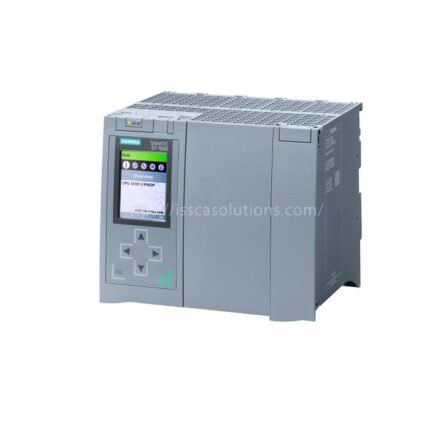


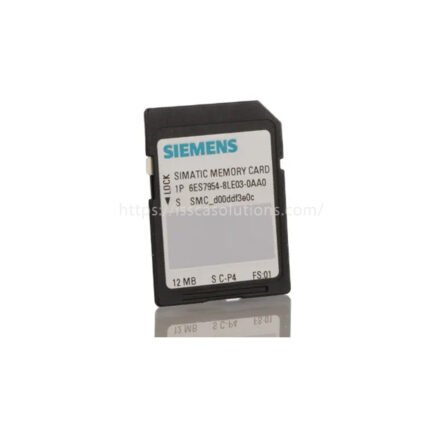
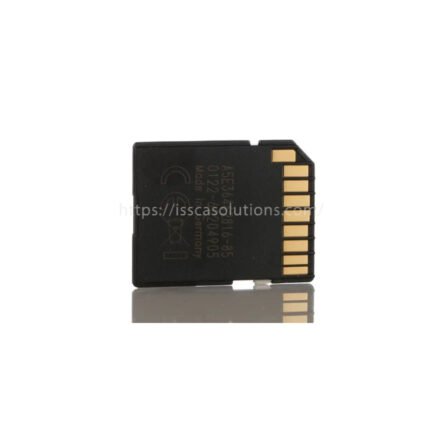
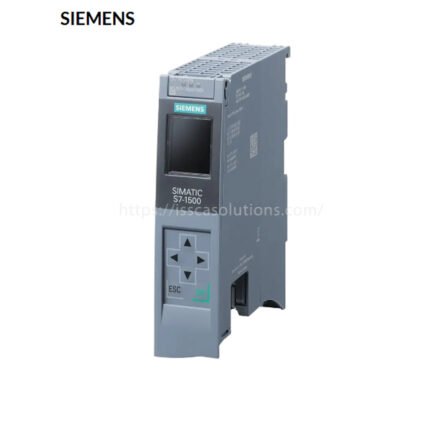
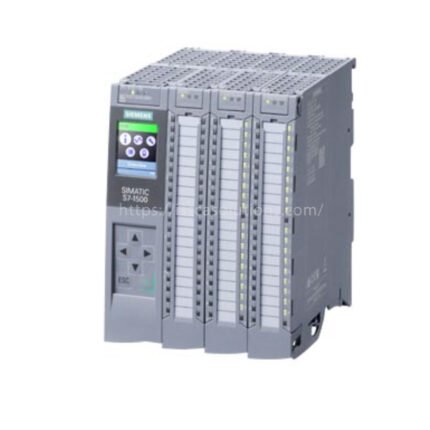
Beoordelingen
Er zijn nog geen beoordelingen.